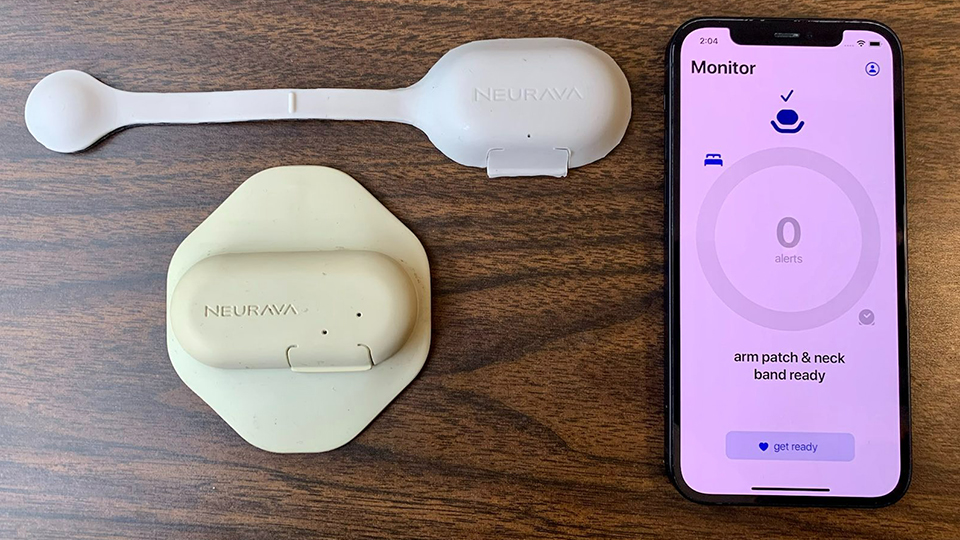Med tech startup getting boost from global accelerator
Subscriber Benefit
As a subscriber you can listen to articles at work, in the car, or while you work out. Subscribe Now
A West Lafayette-based medical device startup is using a global accelerator to help fuel growth. Neurava is one of 61 companies from around the world to showcase its medical technology as part of the 11th annual MedTech Innovator, billed as the largest accelerator of med tech companies.
Co-founded by two Purdue University doctoral graduates, Neurava has developed a wearable device to monitor and alert for the impending risk of sudden, unexpected death in epilepsy, or SUDEP.
In an interview with Inside INdiana Business, co-founder and Chief Technical Officer Vivek Ganesh discussed the benefits the accelerator has brought to Neurava and the other companies in the cohort.
“It has allowed us to gain access to a lot of VCs and visibility to them, because we’re sort of pre-vetted companies that they’re looking to get in touch with,” Ganesh said. “I think one of the major strengths was networking and access to those industry experts and your fellow medtech companies who are all at different stages, including the alumni.”
Ganesh discusses the benefits the accelerator has brought to Neurava.
IIB first spotlighted Neurava in 2020, when Ganesh and his partner, CEO Jay Shah, were still PhD candidates at Purdue. The company has since developed a full prototype of the system, including the wearable device, a smartphone app and clinical portal.
The device, called the N1, includes two wearables, one that goes around the neck and another that goes around the arm. Shah said the device can wirelessly monitor key physiological signals associated with SUDEP.
“There’s currently no device out on the market that can monitor for this risk. So we’re developing wearables that can help try to mitigate this risk,” Shah said. “So in a nutshell, the way the system would work is it’s monitoring all of these parameters in these epilepsy patients, and when it detects a dysfunction, or potential SUDEP risk, it’ll send an alert out to a caregiver so that they can perform preventative action.”
Shah explains how the N1 device works.
Neurava conducted its first study with the arm wearable on about 30 patients last year at two partnering centers, which Shah and Ganesh said provided positive results.
Shah said the device brings additional long-term benefits beyond just preventing the onset of SUDEP.
“The data that we’re capturing can also help physicians create a change in clinical outcomes,” he said. “[It] can actually enable them or create some sort of actionable information so that the physicians can better treat these patients [with].”
The first study was conducted only on adult patients. Neurava is looking to begin a second study in the next few months that will feature both the neck and arm wearables on adult and pediatric patients at four partner centers.
The goal of the study will be to achieve full clinical validation for the wearable platform and submit the data for the study to the U.S. Food and Drug Administration for clearance later this year.
Since its inception, Neurava has raised more than $2 million in seed funding from various investors and will have the chance to complete for up to $350,000 in non-dilutive funding from the MedTech Innovator.
An additional benefit of the accelerator, Ganesh said, is access to assistance in connecting with contacts to address certain challenges the company needs to overcome to continue growing. For Neurava, that includes understanding how the device fits with the current health care system, identifying manufacturing partners, and finding suitable labs to continue testing as they prepare for regulatory submission.
“We’re also looking for connections to industry, particularly companies that are in the neurology or epilepsy space, who we can start building relationships with as we think about next steps from an acquisition or partnering perspective,” Ganesh said.
The company is planning to close another round of funding in the coming weeks with the goal of beginning a Series A round in 2024.
If the company receives FDA clearance and completes its fundraising goals, Ganesh said it could bring its device to market in 2025.
